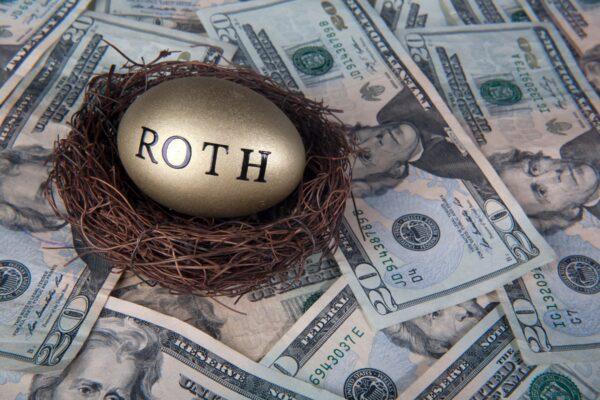When it comes to your retirement, you did everything right to be ready. You developed a retirement plan that took into account your lifestyle, health care, and potential bumps in the road. And, you went ahead and created a budget to ensure that your retirement plan would come to fruition. Do you have everything ready for retirement?
RMDs 101
RMD is short for the required minimum distribution and is the required amount of money you must withdraw from an employer-sponsored retirement plan that’s also tax-deferred. These investment accounts include:- Traditional IRAs
- Rollover IRAs
- SIMPLE IRAs
- SEP IRAs
- Most small-business accounts (Keoghs)
- Most 401(k) and 403(b) plans
The good news is that you won’t have to worry about such a substantial penalty if you take the right precautions.

What Are the Right Precautions?
The first step is calculating your RMD. In most cases, this is simply dividing your tax-deferred retirement account balance as of December 31 of last year by your life expectancy factor. The IRS has a handy worksheet that you can also use to figure this out. Usually, this is the responsibility of the IRA custodian or retirement plan administrator to calculate the RMD.Take Withdrawals Earlier
To be specific, age 59½.Rollover to a Roth IRA
Do you have a Roth IRA or 401(k)? If so, you may want to consider converting some of your savings into a Roth IRA.Generally, this type of plan is preferable for those “who expect to have a higher income after they retire than when they make their contributions.”
In regards to RMDs, if you’re the original owner, there aren’t any required distributions. And, if you’ve had a Roth IRA for at least five years and are over 59½, the money you roll over can be tapped tax-free.
Be aware, however, that this will not lower your taxable income. But, you don’t have to pay taxes on withdrawals.
“This can help you prevent paying more in taxes in the future,” added Stewart and Sheedy. “For instance, while traditional IRA distributions count when calculating taxation of Social Security benefits and Medicare premium surcharges for high-income taxpayers, Roth IRA distributions do not. And if you need extra income unexpectedly, tapping your Roth won’t increase your taxable income.”

Keep Working
Here’s a secret that the IRS doesn’t want you to know. The IRS uses RMDs to cash in on previously taxed income. But, there is a legitimate way to get around this—keep working.Let’s say that you have a 401(k) and are still in the workforce past age 72, or don’t own five percent of a company, then distributions from your 401(k) can be delayed.
Please take note that this is only applicable to your 401(k) at the company where you currently work. If you’ve switched employers and have a previous IRA or a 401(k)—you still need to adhere to the RMD rule. If not, you’ll face a hefty penalty, which again is a staggering 50 percent of the required distribution.
Donate your RMD
Donating to charity makes you feel better, brings more meaning into your life, and can inspire others to do the same. You can also receive a tax deduction. But, did you know that you can donate your RMD to a qualified charity?While this doesn’t apply to 401(k)s, if you have an IRA and are 70 ½ or older, you can transfer up to $100,000 directly to charity annually. Besides assisting those in need, this move can save on paying taxes as it doesn’t count towards your adjusted gross income.

Consider a Qualified Longevity Annuity Contract
In 2014, the U.S. Treasury Department permitted IRA owners and qualified plan participants to purchase a qualified longevity annuity contract. Shortened to QLAC, this lets you fund an annuity from assets that you already have stashed in a longevity annuity contract, such as an IRA or pension.Why would you want to do this? Well, it guarantees that you’ll receive monthly payments for the rest of your life. And, you can also defer your RMDs until the age of 85.
Moreover, this can reduce a person’s required minimum distributions. As a result, you can remain in a lower tax bracket and avoid a higher Medicare premium.
Purchase a Variable Annuity
At Due, we’ve defined variable annuity as: “A type of annuity contract that permits the owner to allocate the premium amount among several different smaller investment choices such as stocks and bonds. Also known as sub-accounts, the contract value will fluctuate depending on the value and performance of investments. of such a plan may vary according to the performance of these investments.”“A variable annuity is similar in concept to a mutual fund,” explains Goetsch. In “that finance professionals manage the funds and the value of the investment can go up and down.” Although there are risks involved, variable annuities are tax-deferred and cost roughly two to 2.5 percent of the total amount invested. And, you can also add a death benefit.
With “a death benefit rider which guarantees that the beneficiaries will get at least the amount invested,” adds Goetsch. That means it will continue to grow tax-free as long as you live. When do you pass, however, your beneficiaries will receive at least some of the assets that you’ve put in.

Pay Your Taxes
“You can also use your RMD to simplify tax payments,” state Stewart and Sheedy. “With the ‘RMD solution,’ you can ask your IRA custodian to withhold enough money from your RMD to pay your entire tax bill on all your income sources for the year.” As a result, this saves “you the hassle of making quarterly estimated tax payments and can help you avoid underpayment penalties.”“Because withholding is considered to be evenly paid throughout the year, this strategy works even if you wait to take your RMD in December,” they add. “By waiting until later in the year to take the RMD, you’ll have a better estimate of your actual tax bill and can fine-tune how much to withhold to cover that bill.”
The Epoch Times Copyright © 2022 The views and opinions expressed are only those of the authors. They are meant for general informational purposes only and should not be construed or interpreted as a recommendation or solicitation. The Epoch Times does not provide investment, tax, legal, financial planning, estate planning, or any other personal finance advice. The Epoch Times holds no liability for the accuracy or timeliness of the information provided.






